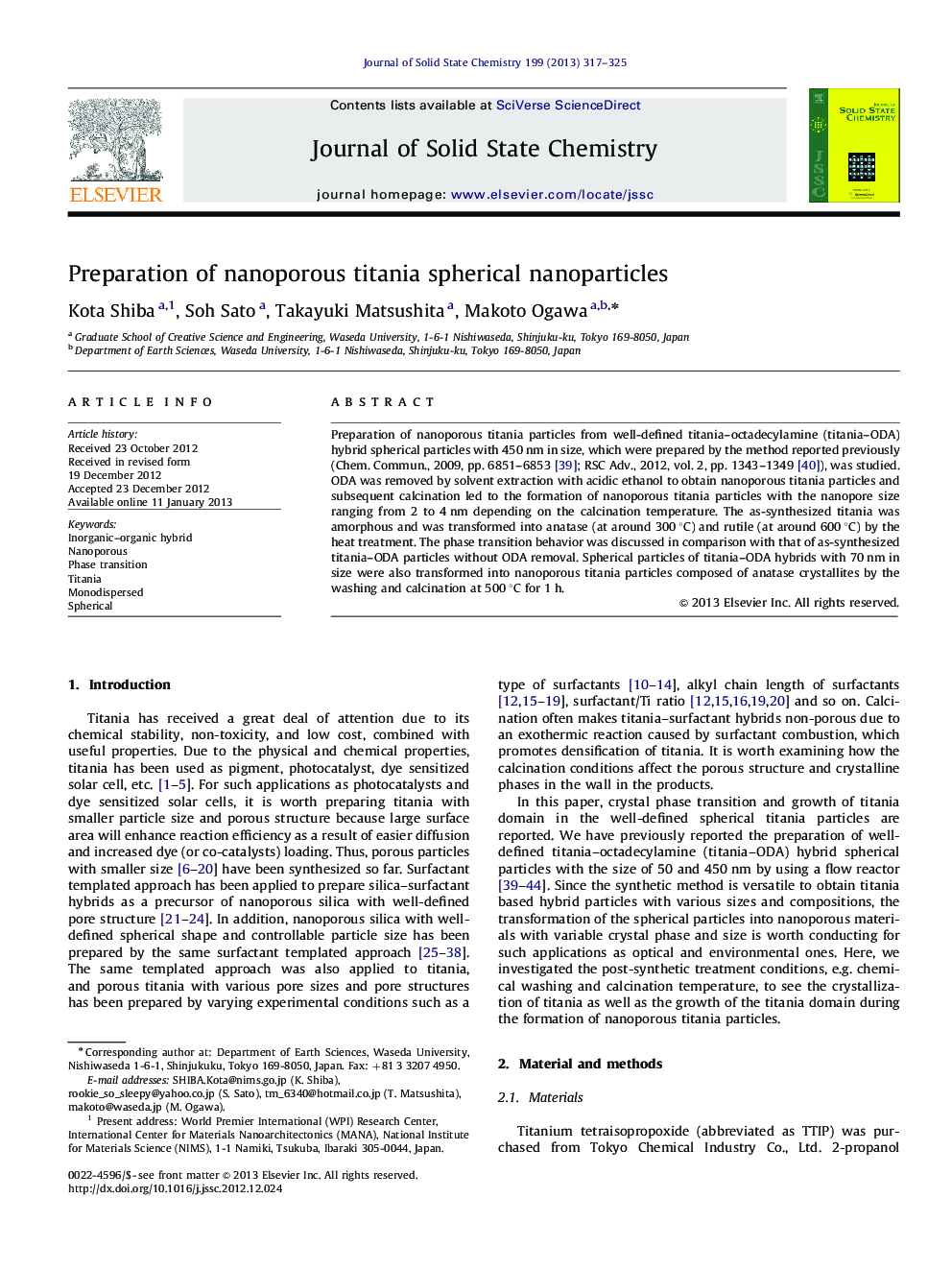| Article ID | Journal | Published Year | Pages | File Type |
|---|---|---|---|---|
| 1330015 | Journal of Solid State Chemistry | 2013 | 9 Pages |
Preparation of nanoporous titania particles from well-defined titania–octadecylamine (titania–ODA) hybrid spherical particles with 450 nm in size, which were prepared by the method reported previously (Chem. Commun., 2009, pp. 6851–6853 [39]; RSC Adv., 2012, vol. 2, pp. 1343–1349 [40]), was studied. ODA was removed by solvent extraction with acidic ethanol to obtain nanoporous titania particles and subsequent calcination led to the formation of nanoporous titania particles with the nanopore size ranging from 2 to 4 nm depending on the calcination temperature. The as-synthesized titania was amorphous and was transformed into anatase (at around 300 °C) and rutile (at around 600 °C) by the heat treatment. The phase transition behavior was discussed in comparison with that of as-synthesized titania–ODA particles without ODA removal. Spherical particles of titania–ODA hybrids with 70 nm in size were also transformed into nanoporous titania particles composed of anatase crystallites by the washing and calcination at 500 °C for 1 h.
Well-defined titania–octadecylamine hybrid spherical particles were prepared as precursors for nanoporous titania particles. The nanoporous structure was varied by calcination and the mechanism was proposed: titania wall shrank to expand pore size (2.2–3.3 nm) at calcination up to 300 °C and crystal phase transition (300–800 °C) resulted in broader pore size distribution. Figure optionsDownload full-size imageDownload as PowerPoint slideHighlights► Nanoporous titania with variable pore size were obtained by calcination at various temperatures. ► Pore size is determined based on particle shrinkage and growth of crystalline titania domain. ► Nanoporous titania with the same crystallite size and different particle size were obtained.
